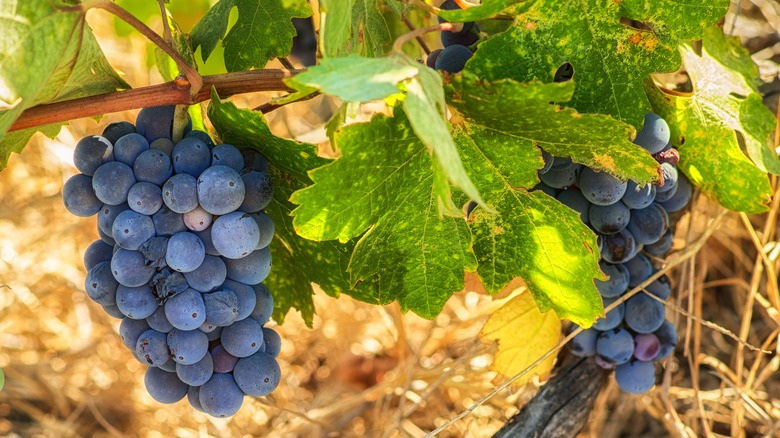Zinfandel Wine Didn't Originate In The US
The Zinfandel Advocates & Producers, or ZAP, is an organization that celebrates all things Zinfandel, and their account of the grape variety's journey in the U.S. mirrors the tumultuous trajectory of the wine industry in California. Zinfandel became a vital grape variety in California because it grew well, and the Italian immigrant families who ended up there knew how to raise this and similar varieties.
The Trincheros were one of the Italian families that left the East Coast and settled in California to breathe new life into one of the wineries that had shuttered during Prohibition. In 1948, the Trincheros purchased the Sutter Home Winery, which was originally founded in 1890. And according to Forbes, it was Bob Trinchero's fortuitous fluke in 1975 — a stuck fermentation of a saignée method rosé of Zinfandel, resulting in a semi-sweet wine — that may have saved Zinfandel from near-eradication during a period when Zin vines were being ripped up and replanted with sexier and more expensive varieties like Cabernet Sauvignon. When word got out, demand for Sutter Home's White Zinfandel was unprecedented, and SevenFifty Daily explains it became the best-selling wine in the country, with an annual production of two million cases a year.
Real Zinfandel
Zinfandel is a red grape variety that can make magnificent, complex, and versatile wines, but where did it come from? The Los Angeles Times points out that its origins had long perplexed winemakers and viticulturists, people who'd helped determine that Cabernet Sauvignon, for example, is rooted in Bordeaux and Chardonnay and Pinot Noir both hail from Burgundy.
According to Vivino, in the 1960s, a viticulturist from UC Davis saw vines in southern Italy that looked remarkably like Zinfandel. He brought cuttings of the grape variety (which the locals called Primitivo) back to California and observed that Primitivo and Zinfandel were, as far as he could tell, the same grape variety. The problem? Primitivo wasn't native to Italy, just as Zinfandel wasn't native to California, the Los Angeles Times explains. The grape had to have come from somewhere, but nobody was certain exactly where.
It was UC Davis plant geneticist Carole Meredith, along with her team and the perfectly-timed assistance from researchers overseas, who, in 2001, finally solved the mystery of Zinfandel's origins.
Genetic testing, along with a little luck, yielded the answer
Carole Meredith told Grape Collective that while working on the Zin puzzle, she wanted to investigate grape varieties in Croatia, which was just across the Adriatic Sea from Puglia, where Primitivo grows in Italy. The problem? Meredith said, "I didn't know anybody in Croatia, and you can't just march into somebody else's country and go tramping through their vineyards and grab stuff, that's just not the way it works."
In 1997, however, Carole received an email from Croatian researchers who wanted her help and expertise in preserving native Croatian grape varieties. It took a while, but Carole and the Croatian team together tramped through vineyards until they found a scant handful of vines that turned out to be an ancient grape variety called Crljenak Kaštelanski, which Meredith determined is genetically the same as the grape we call Zinfandel (and also Primitivo). So, the so-called all-American Zinfandel really originated in Croatia.
Meredith enlisted the help of a historian, who traced the history of the grape variety to the Middle Ages when it was an important variety in the Adriatic region, which was then called Tribidrag. Today, Carole and her husband, Steve Lagier own the Mount Veeder Napa Valley vineyard where they grow Zinfandel, though they call it by its oldest name. Their Tribidrag is a small production wine, made from grapes the couple tends themselves, and it retails for $45 per bottle.


